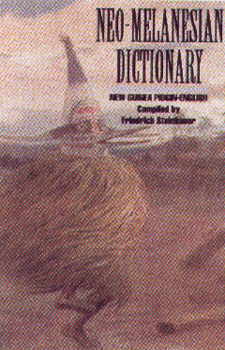

The sovereign similarly only draws from Papua New Guinean coffers for support in the performance of his duties as monarch of Papua New Guinea citizens do not pay any money to the Monarch or any other member of the Royal Family, either towards personal income or to support royal residences outside of Papua New Guinea. Further, when they and other members of the Royal Family are acting in public specifically as representatives of Papua New Guinea, they will use, where possible, Papua New Guinean symbols, including the country's national flag. This division is illustrated in a number of ways: The Monarch, for example, holds a unique Papua New Guinean title. The sovereign's role as Monarch of Papua New Guinea is distinct to his or her position as monarch of any other realm, including the United Kingdom. Papua New Guinean version of the Queen's Diamond Jubilee Medal, 2012 I know how honoured Her Majesty is to be your Queen, a title borne by her with immense pride and renewed by the people of this great country upon independence in 1975. According to Martin Charteris, the Queen was "both tickled and touched" and that she accepted the role straight away. On 15 August 1975, the Assembly of Papua New Guinea formally adopted the Constitution, invited the Queen to be head of state and asked her to accept Parliament's nomination of John Guise as Governor-General of Papua New Guinea. They wanted a politically-neutral head of state who could provide unity and continuity, and the government wanted to retain all the traditional knighthoods and decorations. Papua New Guinean ministers noted the affection the people had for the Queen when she last visited in 1974. Papua New Guinea became independent on 16 September 1975, having been under Australian administration for the previous 60 years, but Papua New Guinean ministers decided that the country still wanted a monarch as its head of state. Initially, it was expected that Papua New Guinea would adopt a republican constitution on independence, but later Papua New Guinean parliament invited Queen Elizabeth II to be their sovereign and head of state. Independence from Australia was granted in 1975. After the Second World War, the Territory of Papua and New Guinea was established as a United Nations trust territory administered by Australia. The northern area of New Guinea was a territory of the imperial German Crown until Australia seized the area during the First World War. After being fully annexed into the British Empire in 1888, the territory was placed in 1902 under the authority of the Crown in its Australian parliament and council. The British protectorate of the Territory of Papua along the south coast of New Guinea and adjacent islands was proclaimed in 1884.


Further, Royal Assent or the royal sign-manual are required to enact laws, letters patent, and orders in council. The responsibilities of the sovereign, and of the governor-general, under the Papua New Guinean constitution, include summoning and dismissing parliament, calling elections, and appointing governments. The monarch lives predominantly in the United Kingdom and, while several powers are the sovereign's alone, most of the royal governmental and ceremonial duties in Papua New Guinea are carried out by the monarch's representative, the governor-general. However, the King is the only member of the Royal Family with any constitutional role. As a result, the current monarch is officially titled the King of Papua New Guinea and, in this capacity, he and other members of the Royal Family undertake public and private functions domestically and abroad as representatives of the Papua New Guinean state. Although the person of the sovereign is equally shared with 14 other independent countries within the Commonwealth of Nations, each country's monarchy is separate and legally distinct. The current monarch and head of state, since 8 September 2022, is King Charles III. The monarchy of Papua New Guinea is a system of government in which a hereditary monarch is the sovereign and head of state of Papua New Guinea.


 0 kommentar(er)
0 kommentar(er)
